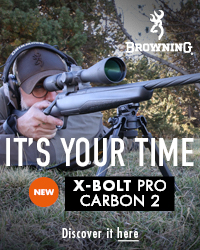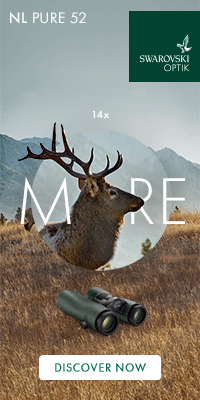County Deer Stalking ask’s professional deer stalkers Jason Doyle from the ‘Field Sports Ireland’ and Colin Fraser head stalker at the ‘Dalness Estate’ in the West Highlands, for their opinion on the most suitable calibre for deer stalking in the highlands of Scotland.
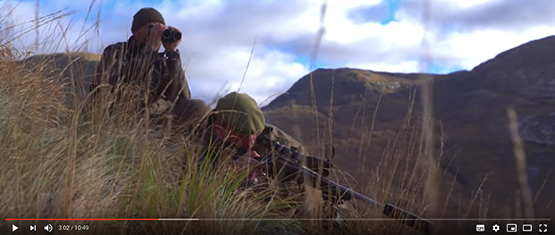
(Above you can watch our 'youtube' film of the full interview by clicking on the following link: youtube )
Choice of calibre is very personal and strong arguments can be made for most deer legal calibres ranging from the .243 to Magnum Calibres and will be dependent on the topography of the ground that you are stalking over and the species likely to be encountered.
The Highlands of Scotland are one of the most iconic hunting destinations anywhere in the world and the stalking and shooting of deer has been a way of life for generations. Typically, the deer are hardy and consist in the majority of Red deer with some Sika and Roe. Due to the barren nature of much of the highland’s, shots are typically taken at more extended ranges than those taken by lowland, woodland stalkers where shots are usually taken at around 100 yards. In the highlands of Scotland average shots might be taken at 150 yards and sometimes, provided the stalker has sufficient skill, even further.
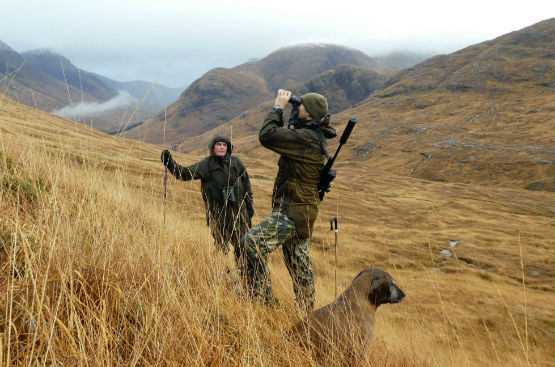
(Above: Jason Doyle stalking with the Capreolus Club in the West Highlands)
We start by asking Jason Doyle why calibre choice is so important? “You often hear people saying that its all about bullet placement and yes in theory that is the case…however, I can’t get it right all of the time and I’ve never met anyone that can, deer are always moving….it’s also difficult to know if a deer is 100% broadside or not”. For these reasons Jason explains that he prefers calibres with a little more knock down energy than the .243 and 6.5x55 Swedish. Colin agrees with Jason’s opinion of the .243 and reiterates: “If it hits the spot it’ll do the job however, I have found that if you hit a bone in the shoulder it sometimes will stop there”.
Jason continues: “What I like about the bigger calibres .270 and .30-06 is when it does go slightly wrong you always get that exit hole and you always have a trail to follow, with the .243 everything stays in the animal and you don’t get that exit that you need, if the animals has gone even 50yards into forestry you need a trail to follow for either you or your dog”.
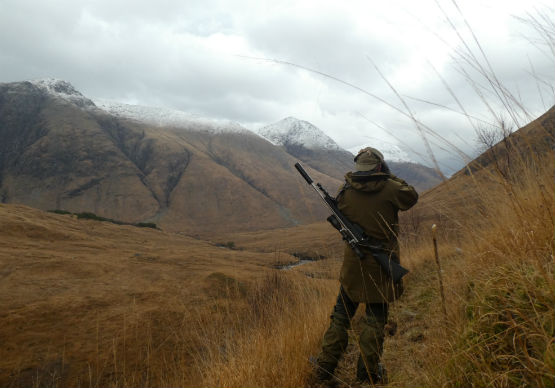
(Above: Colin Fraser on his beat in the West Highlands of Scotland)
We put the .308 Winchester to Colin as a viable option: “I cant fault it, I get ballistic tip 130 grain bullets for it and that’s what all of the guests use here, but personally I am a fan of the .270”….“In the past the 270 used to be frowned upon and all of the estates were using .275, 7x57 and the .270 was seen as a contractors tool”. Jason agrees with Colin’s like of the .308 but considers the .308’s slightly more pronounced trajectory as a problem when shooting deer at extended ranges.
We ask Jason for his opinion on the magnum calibres: “I love the 7mm Rem’ Mag’ and I did have one years ago in a ‘steyr’, there are a couple of things that have kept me away from buying one, one is that it reduces your magazine capacity by one, which for most people wont make a difference, however, when you are in a culling situation just that extra shot can make a difference”. Jason also explains that availability of ammo can also be a problem. Jason continues: “I really like the way the Magnums kill and we get a lot of English and European clients to Ireland using 300 win mag’s and yes, they do a fantastic job of putting deer down, but I am a little shy of recoil and that extra recoil has been an issue for me in the past and that’s why 270 and .30-06 is about as far as I want to go”.
So, what is Jason and Colin’s preferred calibre for stalking in the highlands and at what range do they tend to zero? We first turn to Collin: “I’ve done a fair bit of woodland stalking and open hill stalking and for me I’ve got to say that the .270 is my favourite calibre, it’s a flat shooting calibre and I use 130 grain bullets and that suits me from close range right out to 220 meters without having to consider adjusting”. Colin also reveals that he zeros at 180 meters saying its: “slightly high at 100 but for normal chest shooting very little adjustment out to 250meters”.
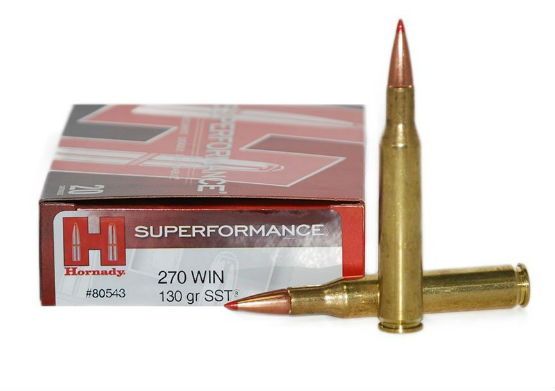
(Above: The .270 Winchester first introduced in 1925 as a necked down .30-06. For more info' on the .270 follow this link: 270-winchester)
We ask Jason the same question: “I’ve always used .270, I’ve gone away from it several times to bigger and smaller calibres but I’ve always found myself coming back to it, for me it does the job nicely, its that nice balance of power and not too much recoil, I use a 130 grain bullet, I am not worried about meat damage at all, what I want is an animal dead as close to the shot sight as possible and I zero at 150, but I use a ballistic turret or ballistic reticule, but I never really worry about it because we are always chest shooting and I never really worry about it untill you get passed 200”.
So that’s it folk’s, it’s the .270 Winchester that wins top spot. Used by our professionals with 130 grain bullets the .270 can propel a bullet at around 3100fps from the muzzle with around 2700 ft’lbs of energy. Its powerful, flat shooting and manageable and our stalkers choice for the best highland calibre.
For stacks of information on a whole range of deer legal calibres, please follow this link: rifle-calibres
Or to watch the whole interview on 'youtube' simply follow this link: youtube



